Understanding how the oven temperature affects the final product in baking is a MUST. This is an information that everybody who are into baking should know. If you are a first time baker, even more that you need to read this. If you are a seasoned baker,take this as a fresher. After all,just like any other thing, baking is a learning process. Even professional baker makes mistakes, we all need this. Read on.
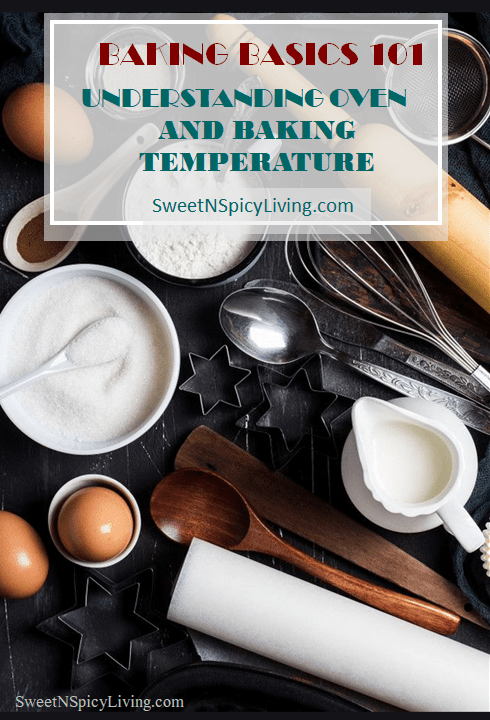
While I had been baking for awhile now, Sometimes I still feel like a beginner. There is always so much to learn. I’ve decided to share with you my baking learning journey, and I hope this will benefit you as much as it helped me. I had been meaning to create more baking basics series but I had always been side tracked with recipe and travel post, and now, gardening (my new hobby). I’ll be documenting things that I had learned and I will share with you my experiences in baking, baking basics is not just my journey, it is our journey to making ourselves a better baker, especially if you cannot afford to go to a culinary school for whatever reason. I started on my own, learned everything on my own by reading and researching, by watching videos and by listening to advice and feedback. I feel it’s time to give back and share what I’ve learned.
What You Will Learn in This Post
- How to Test if Your Oven is Properly Calibrated
- Why Buy Oven Thermometer?
- How to Decide the Right Baking Temperature
- Oven Temperature Conversion
- How Altitude Affects Baking Temperature
- How to Decide Baking Temperature When Recipe Doesn’t Mention It
- How Humidity Affects Baking Time and Oven Temperature
Today’s Lesson: Understanding Oven Temperature & Baking
Today’s post is about understanding oven temperature and how it affects baking. Almost 90% of the time you will be using oven when baking, unless you are making a no bake dessert. Recipe comes with baking temperature unless the author forgot to include it (sometimes I am guilty with that, my apology). Understanding the effect of the selected temperature will help you appreciate the process more. If you are a recipe creator, I’ll give you some tips and guide (in general) on how to select the baking temperature for your baked products. Let’s get started!
How to Test if Your Oven is Properly Calibrated
You can never too sure unless you test. If I asked you now how sure are you that your oven is properly calibrated, can you confidently without any hesitation say “Yes”? Oven calibration is as important as knowing the ingredients that you use for baking. In fact, it is makes a huge difference to the outcome of your bake products. I feel that this is a very important topic, and I created a separate post dedicated on this topic, check out my “How to Tell If You’re Oven is Lying to You” post. In that post, I shared 2 simple method on how to test your oven. 1.) By using an oven thermometer 2.) By using Sugar method. Check out the post to learn more about it.

Why To Buy an Oven Thermometer?
Oven Thermometer is one of those baking tools that is often times overlooked by many people who are just getting into baking. In fact, I was one of those who doesn’t own an oven thermometer when I started baking. It was only when started making cookies that I decided to buy one. Oven thermometer is a life saver when it comes to baking. Why so? Well because however we want to trust our oven, more often than not, our oven digital reading is not always in sync with the actual temperature inside. I’ve tested my oven quite a few times and in both instances, it were never right. My inside oven temperature is always higher than the digital reading outside. In that case, my oven thermometer is more reliable than my digital oven reading. If you are wondering how to test if your oven internal and external reading is in-sync, check out my post “How to Tell if Your Oven is Lying to You”. Oven thermometer is not an expensive baking tool, but whatever the amount, it is worth the investment. Knowing the right temperature of your oven inside is crucial especially for baked products. It may not be much for cooking, but for baking, even her slightest variance makes a difference. So I strongly recommend that you buy one if you are serious with baking. You can live without it for sure, but if you want less baking disaster like under bake cake or over baked cookie, then go get an oven thermometer. Consider it your baking investment.

How to Decide the Right Baking Temperature
Although most recipe will tell you what temperature to set the oven, it is still important to know why such oven temperature is recommended for the recipe. This information is also useful if you are a recipe creator. Here is a simple guide to help you decide what temperature to set for your bake product. Consider it as a general guide, but not necessarily something that is set on the stone. Oven temperature for baked products sometimes also depends on the ingredients you are using, so be your own judge and make the call for what is best for your recipe.
- 325°-350°F: This is for me is the range the I used most often, and maybe you too. Temperatures over 300°F are where you begin to experience caramelization (browning of sugars) and the maillard reaction (browning of proteins).
- Use For: This range is best for anything that’s going to be cooking for a while, such as slow roasts or braises. Cakes are also typically baked at 350°F since they have a fair amount of sugar. If baked at a higher temp, the exterior of the cake would burn before it was fully cooked in the center. Some delicate cakes like Chiffon cake might require a lower baking temperature about 340F. Cookies, brownies, cupcakes and most homemade bread are baked at 350F most of the time. So If I do not know what temperature to use, I always go with 350F as default and monitor the exterior and interior of the bake goods and adjust the temperature as needed.
- 375°- 400°F: Shorter term baking or roasting favors a slightly higher temperature to ensure crisp edges to cookies or bubbling golden cheese.
- Use For: This is also the perfect roasting temperature for chicken to ensure golden, crispy skin. This range can also be use for cookies, scones, biscuits, muffins, puff pastry desserts, quick bread, loaf bread (at 375F). As the heat gets higher, so does the risk of burning, so you have to keep an eye on whatever is in the oven, especially if using it for cookies.
- 425°- 450°F: If you are aiming for a short-term quick baking or roasting, this is the setting to play around with.
- Use For: This setting is great for roasting vegetable. It gives a nice golden roasted vegetables, slightly charred but not burnt. The quick burst of high heat to ensure a golden color without having to stay in the oven for too long.
- This is also the ideal temperature if you’re working with puff pastry, profiteroles or eclair, popovers and dutch baby pancakes since you want the oven to be over 400°F to ensure the steam releases and puffs up the pastry.
- 475°- 500°F: This setting is really hot, I mean really hot! So be VERY careful and attentive when using this temperature
- Use For: This high heat is most suitable for making making pizza or artisan breads. A super high temperature will cause the bread or pizza dough to rise and cook before the gluten has a chance to set. Be careful in using this setting, pay close attention as browning will happen quickly.

How to Decide Baking Temperature When Recipe Doesn’t Mention It
Don’t you just hate it when you are dying to make the recipe and realized that the recipe do not have the mention of the oven temperature setting? As a recipe creator, I am sometimes guilty of this mistake and I apologize to those people that I drove crazy because of forgetting to mention this very important information. How do you deal with case like this? Instead of guessing it, find a similar recipe and use the baking time and baking temperature as a guide (or use the guide I shared above), then adjust it as needed. For example, regular size muffins are about 20 – 25 minutes (more or less). Start checking what you are baking at the minimum time suggested and adjust as needed. This method is applicable for baked products that are not sensitive to temperature drop when the oven is open (the likes of muffins, bars, cookies). Be careful when it comes to cakes, as cake will sink when it is still in the stage of rising and you open the oven. There are cake guides and baking temperature depending on the size of the cake and amount of batter, but this could also vary on what type of cake you are making. I guess what I am trying to say is, If you find a cake recipe that you are dying to make and you realize it doesn’t have the baking time and oven temperature, forget about and find another recipe. It is not worth risking the cost of the ingredients and your time to something that you are not sure if it will turn out right or not. But, if you have your mind set to it, you can write a comment and ask the blogger about it, cross our finger that the blogger will reply. Until then, hold it.
Oven Temperature Conversion
Whether you are baking in Farenheit or Celsius, here is a chart guide on how to do the conversion.
| Fahrenheit | Celsius | Gas Mark | Terminology |
|---|---|---|---|
| 275 degrees F | 140 degrees C | 1 | Very Cool or Very Slow |
| 300 degrees F | 150 degrees C | 2 | Cool or Slow |
| 325 degrees F | 165 degrees C | 3 | Warm |
| 350 degrees F | 177 degrees C | 4 | Moderate |
| 375 degrees F | 190 degrees C | 5 | Moderate |
| 400 degrees F | 200 degrees C | 6 | Moderately Hot |
| 425 degrees F | 220 degrees C | 7 | Hot |
| 450 degrees F | 230 degrees C | 8 | Hot |
| 475 degrees F | 245 degrees C | 9 | Hot |
| 500 degrees F | 260 degrees C | 10 | Very Hot |

How Altitude Affects Baking Temperature
Most baking recipes were designed for sea level, this means that If you live in a high altitude area most baking recipes will not work even when followed exactly. High-altitude baking success requires few adjustments, and you should be aware and expect this to avoid frustrations. This post is not meant to discuss conversion and adjustment, but only to make you aware of the situation and why and how you location affects your baking.
Low air pressure has two main effects on baked goods:
- They will rise more easily, and lose moisture faster
- liquids evaporate more quickly since water boils at lower temperatures at high altitude.
As leavening occurs faster, gas bubbles tend to coalesce into large, irregular pockets in a batter or dough. The result? A coarse-textured cake. Alternatively, the pressure inside a rising batter can become so great, that cell walls stretch beyond their maximum and burst. Collapsing cell walls means the cake falls too.
Quicker evaporation also has several ramifications. It makes baked goods more prone to sticking. And sugar becomes more concentrated. Some cakes won’t set. Or by the time they do set, they’ve become dry and crumbly.
Source: https://www.exploratorium
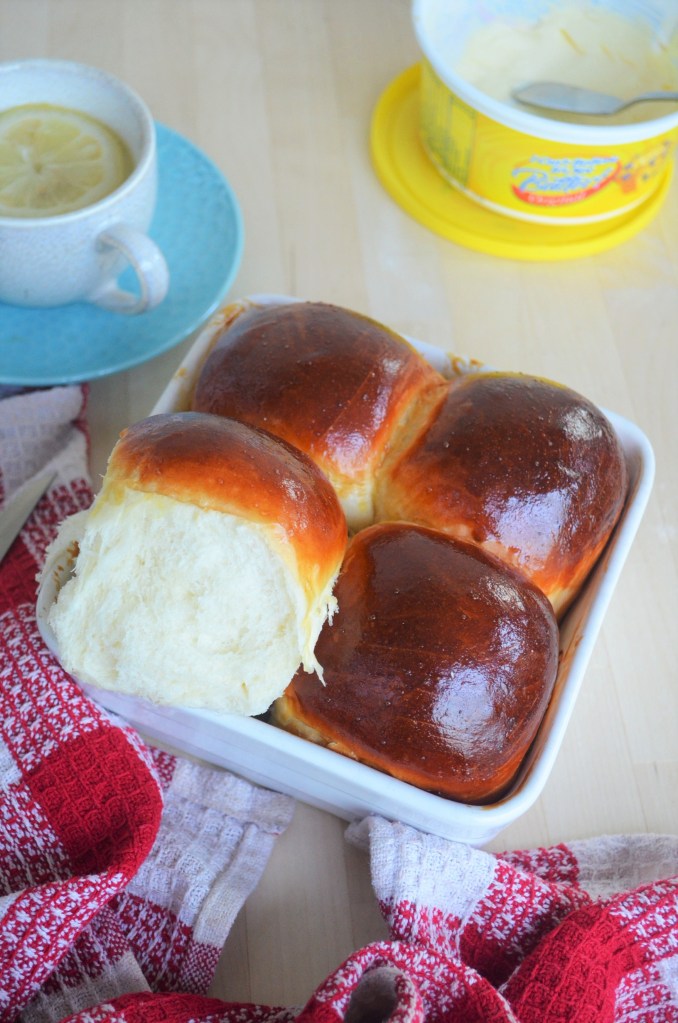
How Humidity Affects Baking Temperature
Have you ever wondered why your dinner rolls turned out perfect when you made it couple time in the winter and ended up having throw it when you made it in Fall or Summer? You made the same recipe, use the same ingredients followed the same steps and yet you ended up having the most soft and fluffy dinners rolls and other times you get a dinner rolls that are dense and hard? Don’t you find it mind boggling? Don’t worry, you’re not alone, and you’re not going crazy. This things happen in baking and there’s a reason for that… Humidity (among others).
Humidity affects not only the ingredients but also the baking time. Let’s talk a little about the ingredients. Flour, sugar, butter (or anything high fat) are basic ingredients which are greatly affected by humidity. High humidity causes moisture in the air and can affect the dry ingredients (like flour, sugar, baking powder,baking soda, cocoa powder). This effect although some times unnoticeable has a great impact in texture and outcome of the baked products. Dry ingredients will have more moisture, so the once 1 cup of water in the recipe may need to be reduced to 3/4 cup.
Humidity also affects the baking time. In high humidity, bake products that bake at 350F for 30 minutes may not be enough and would probably need extra more minutes. An additional 3-5 minutes is a good range then adjust as needed. Please take note that additional baking time vary on what you are baking. Baking in humid day may require longer baking time or higher temperature. If you decide to do higher temperature, pay close attention to the bake product as baking happens faster at high heat and it could easily dry out or burn baked products
Bottom Line
Understanding how your oven works, and what temperature works for what you are baking is crucial information that you should understand. Understanding how things work in baking is key to being a successful baker. Baking is a science more than art and we shall discuss more about the science of baking in the few weeks to come. This is just the start.
That’s it for this week lesson. I hope that you find this post helpful. Stay tuned for next week topic ‘How to Properly Measure Ingredients‘. If you missed the previous lesson, check the links below.
My Latest Video
Baking Basic 101 Series:
If you missed my previous baking 101 Series, check out the details below.
Baking Basic 101 Series: Click the Item to Read Full Details
- 10 Essential Baking Tools for Beginners
- 10 Essential Baking Tools for Small Batch Baking
- Baking Basic 101 Series: How to Tell If Your Oven is Lying to You?
- Baking Basic 101 Series: Understanding Oven and Baking Temperature
- Baking Basic 101 Series: How to Properly Measure Common Baking Ingredients
- Baking Basic 101 Series: How Baking Pan Used Affects Your Baked Products
- Baking Basic 101 Series: Know Your Flour
Thank You for visiting my website. Please don’t forget to click the “Like” button below if you like this recipe. Lastly, did you know that I have a YouTube Channel? Please support my channel by clicking on the “Subscribe” button in my video and the “Bell” icon to get notification of new videos.

FOLLOW SWEETNSPICYLIVING ON SOCIAL MEDIA
Facebook | Instagram | Pinterest | Twitter | YouTube
Sources:
Categories: Baking 101, Baking 101 Series
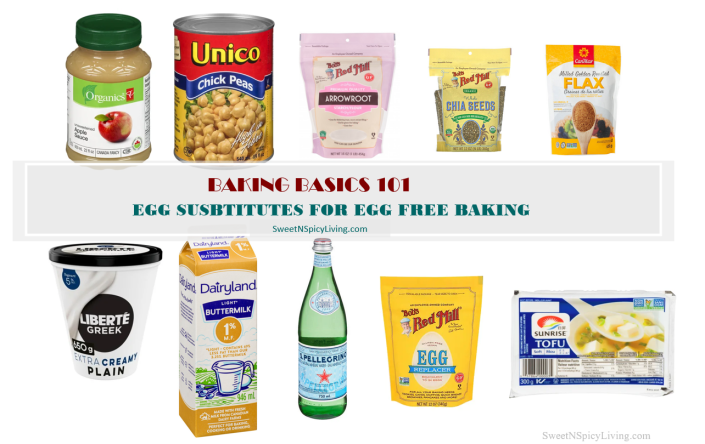
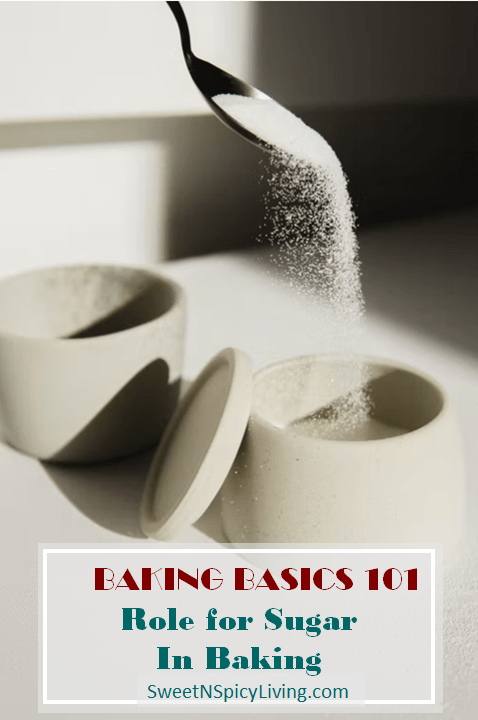
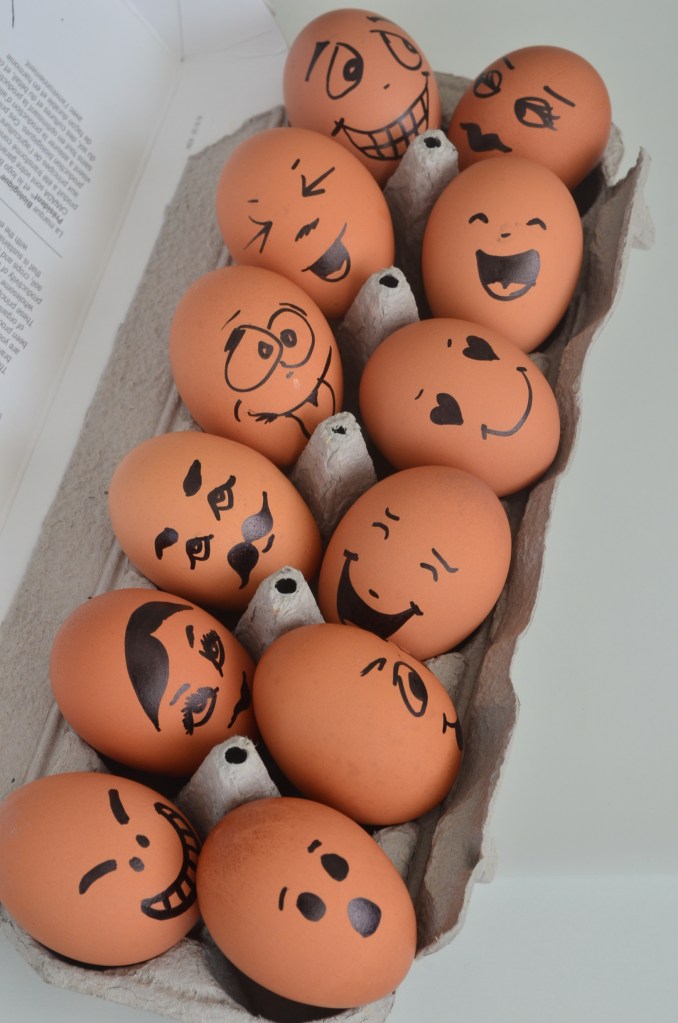


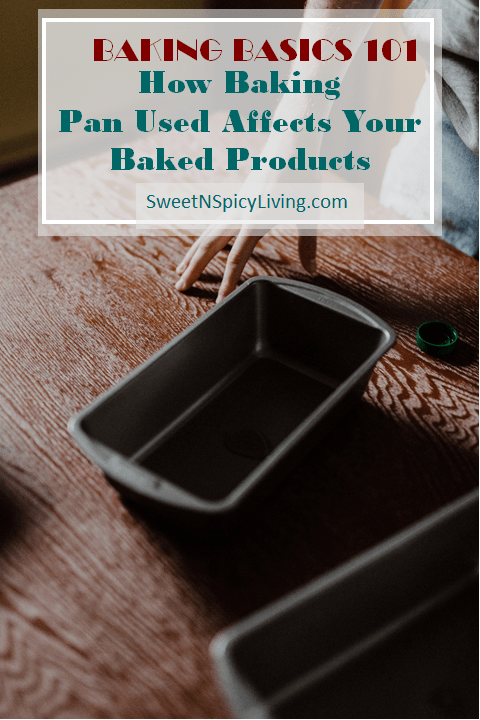



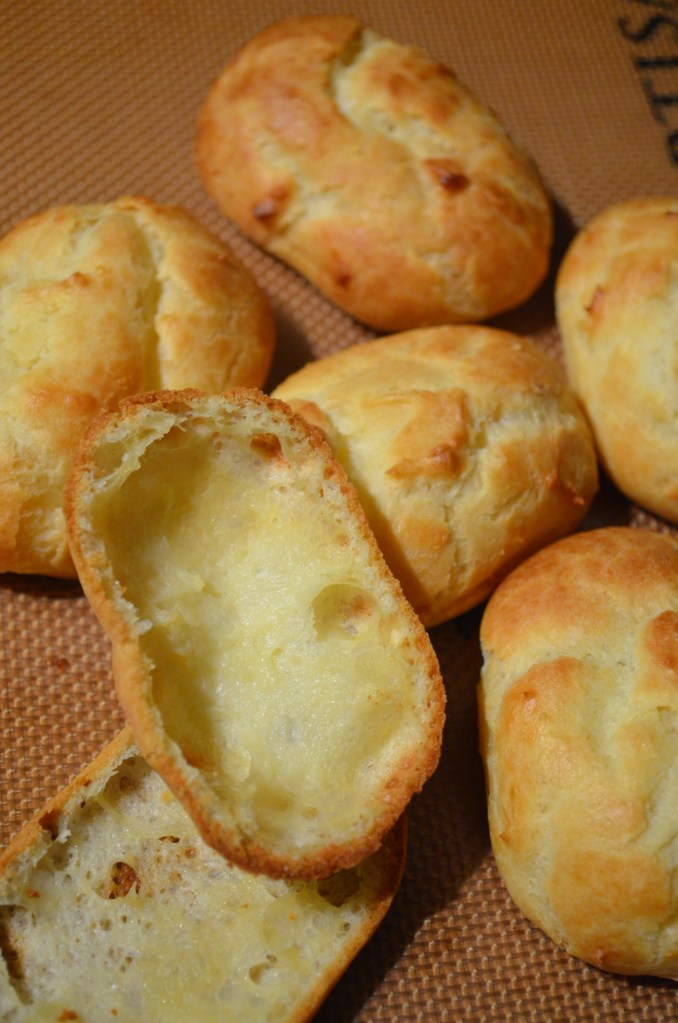


A nice guide, thanks!
LikeLiked by 1 person
Thanks. Every time I bake something, there is something new to learn
LikeLiked by 1 person